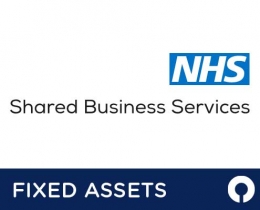Preventive vs Reactive Maintenance
What’s the difference between reactive and preventive maintenance, and which strategy is best for you?

What’s the difference between reactive and preventive maintenance, and which strategy is best for you?

In asset-intensive organisations and industries, keeping all equipment working in top condition is no small task. Carrying out the right type of maintenance at the right time is key to keeping assets working optimally and safely, reducing downtime from equipment breakdown. However, it’s also important to find the right maintenance strategy and frequency to keep your operations running efficiently without wasting time or money.
In this article, we’ll take a closer look at the two major maintenance strategies, preventive maintenance and reactive maintenance, and compare the pros and cons to help you decide which strategies are best for you.
Reactive maintenance, also known as ‘run-to-failure’ maintenance, is a maintenance strategy where maintenance is carried out as soon as the asset breaks or fails. This maintenance should be completed as quickly as possible to get the equipment back in working order to continue normal business operations.
In contrast to reactive, preventive maintenance (sometimes written as preventative maintenance) is where maintenance is carried out before an asset goes wrong. In theory, this proactive approach allows your organisation to avoid issues by nipping them in the bud, thus extending your assets’ lifespans and minimising downtime.
There are a few different types of preventive maintenance; each strategy uses a different factor to determine when maintenance should be carried out.
This maintenance strategy is where maintenance is scheduled after a specified number of hours of use or number of units of work.
For example, a vehicle may undergo an oil change after every 4,000 miles, or a conveyor belt may be maintained after 5,000 hours of operation.
Somewhat simpler than usage-based maintenance, time-based maintenance is a strategy where maintenance is performed at regular intervals. This preventive strategy is also sometimes called calendar-based maintenance.
For example, maintenance on a conveyor belt may occur once every six months, or air conditioning filters may be changed on the first day of every month.
Note: the key feature that differentiates usage-based and time-based maintenance is that usage-based maintenance is based on how much the asset is actually used, whereas time-based maintenance is always carried out after the same time interval regardless of how much the asset is used.
A predictive strategy of maintenance uses asset data and usage information to predict when problems will occur and schedules maintenance before then.
For example, predictive maintenance may involve using sensors to track the temperature of a motor to identify potential issues in advance. Condition-monitoring is a more costly approach to maintenance as it requires more technology and labour, however, it can be a highly effective and proactive way to optimise maintenance.
Similar to predictive maintenance, prescriptive maintenance seeks to anticipate when assets will require maintenance so schedules can be optimised. However, the key difference is that it goes a step further than predictive maintenance by collecting data about the asset’s condition and then using artificial intelligence (AI) to anticipate future maintenance needs.
For example, while predictive maintenance will monitor the temperature of a motor and alert you to future maintenance needs when it surpasses a particular temperature, indicating that it may break in the next few weeks, prescriptive maintenance means analysing all the temperature data to predict the asset’s lifespan and schedule maintenance accordingly.
While prescriptive maintenance is the most intelligent solution, it also requires the most data and the most technologically advanced tools to work effectively.
Both these strategies of equipment maintenance may have their appropriate uses within your operations. For example, for equipment that is not critical to your operations or is very cheap to repair or replace, reactive maintenance can be a great strategy. However, if your organisation also uses equipment or machinery that is essential to production, is very expensive, or if your industry requires greater health and safety compliance, preventive maintenance is a better strategy for these critical assets.
Moreover, the maintenance strategy you choose will also depend on other factors such as your production schedule, personnel availability, and the technology you have available for monitoring and implementing maintenance.
In short, your organisation may use just one method of equipment maintenance or you might use a mix of different strategies for different types of assets. The more complex your maintenance needs, the more useful maintenance software will be to your organisation.
To find out more about maintenance strategies for complex assets with multiple composite elements, read our guide to equipment maintenance for complex assets.
Equipment maintenance software, sometimes referred to as a CMMS or Computerised Maintenance Management System, is essential for organisations looking to optimise and streamline maintenance. FMIS equipment maintenance software supports your maintenance strategies by:
… and much, much more.
As part of our full-featured asset management software, the equipment maintenance module can also integrate with your existing ERP and finance systems. To find out more about FMIS asset management and equipment maintenance software, book a demo today or get in touch with our expert team.
For more information on how FMIS can help you effectively track and manage your assets and equipment, please get in touch with an FMIS consultant or call us on +44 (0) 1227 773003.



FMIS Ltd
167b John Wilson Business Park
Whitstable
Kent
CT5 3RA
United Kingdom
Phone:+44 (0) 1227 773003
Fax:+44 (0) 1227 773005
Sales:sales@fmis.co.uk
Support:support@fmis.co.uk

 Doncasters consolidate their Fixed Asset Management with FMIS
Doncasters consolidate their Fixed Asset Management with FMIS| Cookie | Duration | Description |
|---|---|---|
| cookielawinfo-checkbox-advertisement | 1 year | Set by the GDPR Cookie Consent plugin, this cookie is used to record the user consent for the cookies in the "Advertisement" category . |
| cookielawinfo-checkbox-analytics | 11 months | This cookie is set by GDPR Cookie Consent plugin. The cookie is used to store the user consent for the cookies in the category "Analytics". |
| cookielawinfo-checkbox-functional | 11 months | The cookie is set by GDPR cookie consent to record the user consent for the cookies in the category "Functional". |
| cookielawinfo-checkbox-necessary | 11 months | This cookie is set by GDPR Cookie Consent plugin. The cookies is used to store the user consent for the cookies in the category "Necessary". |
| cookielawinfo-checkbox-others | 11 months | This cookie is set by GDPR Cookie Consent plugin. The cookie is used to store the user consent for the cookies in the category "Other. |
| cookielawinfo-checkbox-performance | 11 months | This cookie is set by GDPR Cookie Consent plugin. The cookie is used to store the user consent for the cookies in the category "Performance". |
| CookieLawInfoConsent | 1 year | Records the default button state of the corresponding category & the status of CCPA. It works only in coordination with the primary cookie. |
| PHPSESSID | session | This cookie is native to PHP applications. The cookie is used to store and identify a users' unique session ID for the purpose of managing user session on the website. The cookie is a session cookies and is deleted when all the browser windows are closed. |
| viewed_cookie_policy | 11 months | The cookie is set by the GDPR Cookie Consent plugin and is used to store whether or not user has consented to the use of cookies. It does not store any personal data. |
| Cookie | Duration | Description |
|---|---|---|
| CONSENT | 2 years | YouTube sets this cookie via embedded youtube-videos and registers anonymous statistical data. |
| _ga | 2 years | The _ga cookie, installed by Google Analytics, calculates visitor, session and campaign data and also keeps track of site usage for the site's analytics report. The cookie stores information anonymously and assigns a randomly generated number to recognize unique visitors. |
| _gat_UA-48954022-1 | 1 minute | A variation of the _gat cookie set by Google Analytics and Google Tag Manager to allow website owners to track visitor behaviour and measure site performance. The pattern element in the name contains the unique identity number of the account or website it relates to. |
| _gid | 1 day | Installed by Google Analytics, _gid cookie stores information on how visitors use a website, while also creating an analytics report of the website's performance. Some of the data that are collected include the number of visitors, their source, and the pages they visit anonymously. |
| Cookie | Duration | Description |
|---|---|---|
| VISITOR_INFO1_LIVE | 5 months 27 days | A cookie set by YouTube to measure bandwidth that determines whether the user gets the new or old player interface. |
| YSC | session | YSC cookie is set by Youtube and is used to track the views of embedded videos on Youtube pages. |
| yt-remote-connected-devices | never | YouTube sets this cookie to store the video preferences of the user using embedded YouTube video. |
| yt-remote-device-id | never | YouTube sets this cookie to store the video preferences of the user using embedded YouTube video. |
